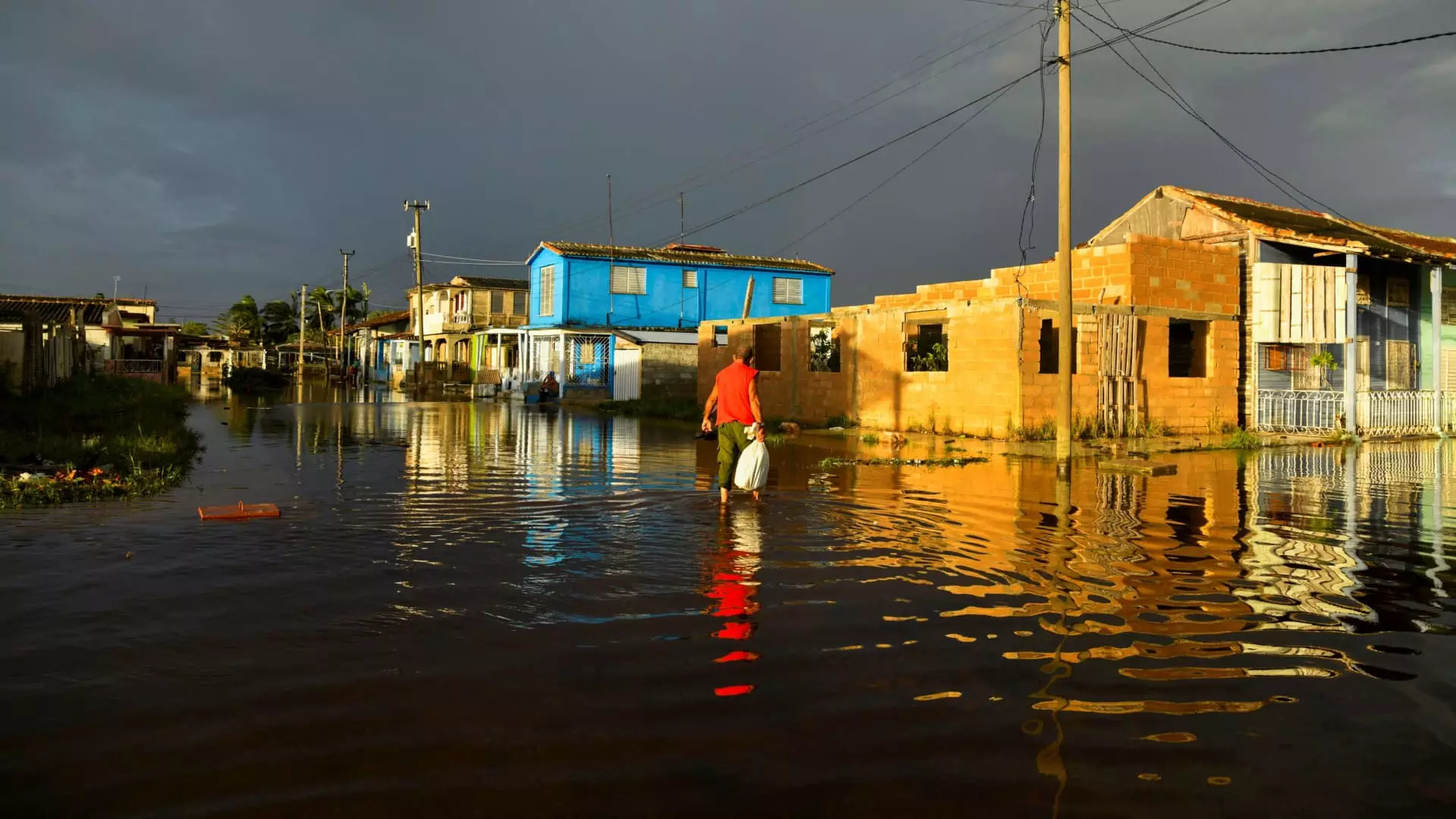In an alarming turn of events, Hurricane Rafael has emerged as the first significant hurricane to strike the Gulf of Mexico in November in nearly four decades. This Category 3 storm, with sustained winds of 120 mph, poses a serious risk to coastal residents in the southern United States. As it moves westward, transitioning from a force of nature to a potential humanitarian crisis, it brings with it the specter of dangerous surf, rip-tides, and life-threatening conditions for thousands along the coastline.
While the Gulf coast braces for Rafael’s impact, the storm has already wreaked havoc on nearby Cuba, leaving millions without electricity. As President Miguel Díaz-Canel toured affected regions, it became woefully evident that the nation’s power infrastructure was inadequately prepared for such extreme winds. Following winds reaching 115 mph, the country faced its second blackout in a month, plunging 10 million people into darkness. With infrastructure susceptibility in densely populated areas like Havana, the crisis unveiled staggering vulnerabilities, compelling desperate citizens to seek refuge in hotels equipped with backup generators, showcasing a desperate struggle for basic necessities in the face of nature’s fury.
Meteorologists monitoring Rafael’s trajectory note that despite expectations of gradual weakening, the storm could still unleash tropical storm-force winds well beyond its immediate vicinity. Threats of power outages, flooding, and property damage loom large; coastal residents are on high alert as evacuation efforts intensify. With more than 283,000 individuals already displaced from their homes, the burden of safety weighs heavily on local communities. As hurricane season stretches into November, the occurrence of such storms becomes increasingly concerning, pointing to unpredictable weather patterns that alarm experts.
Rafael’s potency ties it with Hurricane Kate, which struck the Gulf in 1985 as one of the strongest hurricanes recorded in November over the last 40 years. The history of hurricane activity in the Gulf reveals a troubling trend; late-season hurricanes leave a lasting impact on local ecosystems and economies. As Rafael redefines expectations for future hurricane seasons, officials and scientists must reconsider their approach to storm preparedness and resiliency, weighing the environmental ramifications against community needs.
As Hurricane Rafael barrels its way through the Gulf of Mexico, the storm serves as a stark reminder of the destructive power of nature and the resilience required from affected communities. With a history of disasters intertwined with human vulnerabilities, the aftermath of Rafael will lead to critical discussions on building robust infrastructures capable of withstanding nature’s whimsical ferocity. The need for better emergency management and sustainable adaptations cannot be overstated as the Gulf region continues to grapple with the consequences of climate change and shifting weather patterns. The lesson here is clear: preparation is paramount, resilience is vital, and community solidarity can shine even in the darkest of times.


Leave a Reply